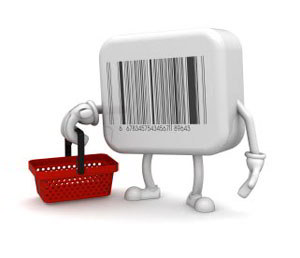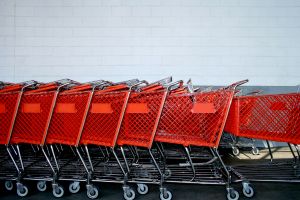These days most people are happy to carry a lot of processing power in their pocket – in their phones – and use it to connect with each other and with retail brands. Companies have a lot of information about the products people want, both their own data and that provided by their customers, such as reviews and comments. It makes sense to link the two.
I recently invited Neil Jones, head of marketing for eMobileScan, who are leading barcode scanner and data capture specialists, to write about a possible near-future for retailers. As you’ll see, some are already there…
 No less than 2,000 stores spread all over the US, Japan, Brazil, and New Zealand are experiencing substantial growths in sales as a result of increased customer loyalty. What do they have in common? All of them are implementing mobile self-service shopping. What is it and how is it increasing customer loyalty? That’s what I’m about to share with you.
No less than 2,000 stores spread all over the US, Japan, Brazil, and New Zealand are experiencing substantial growths in sales as a result of increased customer loyalty. What do they have in common? All of them are implementing mobile self-service shopping. What is it and how is it increasing customer loyalty? That’s what I’m about to share with you.
Why Gaining Customer Loyalty is Now Every Retailer’s Ultimate Goal
Most customers care only for one thing when deciding where to shop – that they get their money’s worth. But once a store manages to instill in the customer’s mind, “This is where I can always get true value for my money.”, that perception would be hard to erase.
Once you gain a customer’s loyalty, that customer will keep coming back no matter what. He’ll be awed at the little innovations you make. And he’ll even tell his friends, office mates, and relatives about it. So what should you, retailers, do to gain a customer’s loyalty? You simply make him happy … every single time he walks through your doors, whether in or out.
Well Informed + Full Control = Happy Shopper
Making customers happy – we know that’s easier said than done. But picture this:
How would you feel, as a customer, if you were able to make all the smart decisions when buying something? How would you feel if, each time you checked out, you know you ended up picking the best product all the time (or at least most of the time)?
To make smart decisions, customers have to be fed the right amount of relevant information when looking for something. That way, they can make intelligent decisions faster. In this fast-paced world, too little, too much, or simply unrelated information just won’t do.
Retailers who know this prioritise investments on CRM, speed through checkouts, inventory visibility, out-of-stocks reduction, workforce management software and hardware, cross-channel integration, fresh item management, PCI compliance, country of origin labeling, and so on.
Customers, on the other hand, already have their own criteria in arriving at a “smart buy”. That’s why retailers have to meet them halfway. There should be an interface between the two, and that’s where the concept of mobile self-service shopping enters the picture.
The Mobile Self-Service Shopping Experience
In mobile self-service shopping, a customer takes a mobile scanner upon entering the store. He then uses it to scan barcodes on items, interact with self-weigh scales, monitor his shopping list, and finally to pay in a checkout or self-payment station. All this time, he packs as he shops, making shopping a very personal experience.
Using similar mobile devices that are more advanced, relevant information can be fed to the customer through them. Information such as: nutritional advice (not just facts), warnings of possible allergens or forbidden food products (say, for those with diabetes), product age, relevant offers, and even suggestions for a preset recipe, can give the customer full control over his shopping.
And this is just the tip of the iceberg. Think of all the possible applications that can be fed to such devices. Finding out if another variant is in stock, reading product reviews, getting estimates (e.g. How many pieces of tiles are needed for a given floor area?), generating a project-based list (e.g. a list of products for replacing a door), and so on.
If this doesn’t make a customer happy, I don’t know what will.
Big Benefits for the Retailer
These systems are very beneficial to the retailer as well. Aside from enjoying increased customer loyalty, he would also be able to free certain personnel from the usual tasks of answering customer queries and have them do other important assignments instead.
Other related retailer-based mobile solutions can be used to support and enhance inventory management, price management, warehousing, point-of-sale, and staff connectivity.
If this doesn’t make the retailer happy, I don’t know what will.
Thanks Neil!
Over to you: as a customer, would you use such a scanner or would you rather use your phone? If you’re a retailer, what advantages/disadvantages do you see? What changes would you need to make to your web estate to make this work for you?
Lucy is Editor at Corporate Eye


